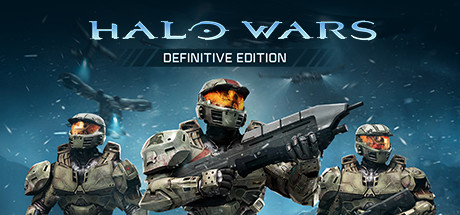Halo Wars 1 & 2: A Tactical Masterclass in Console RTS Gaming
The Halo Wars sub-franchise stands as a bold experiment in adapting real-time strategy (RTS) gameplay to consoles, blending the Halo series’ iconic lore with fast-paced tactical combat. Developed by Ensemble Studios (Halo Wars, 2009) and Creative Assembly (Halo Wars 2, 2017), these games redefined how RTS mechanics could thrive on controllers. This article dissects both titles’ campaigns, factions, and multiplayer ecosystems while arming players with winning Halo Wars strategies.
Part 1: Halo Wars (2009) – Reigniting the Human-Covenant War
Campaign Overview
Set in 2531, Halo Wars follows the crew of the UNSC Spirit of Fire as they battle the Covenant over the mysterious planet Harvest and the Forerunner installation Shield World 0459. The story focuses on Captain James Cutter, Sergeant Forge, and the AI Serena, offering 15 missions that mix base-building, resource management, and large-scale battles. Key moments include the discovery of the Flood and the sacrifice of the Spirit of Fire’s slipspace drive to destroy a Covenant fleet.
Factions and Units
- UNSC: Emphasizes versatility with infantry (Marines, Spartans), vehicles (Warthogs, Scorpions), and air units (Hornets). Unique abilities include ODST drops and MAC Blasts.
- Covenant: Relies on overwhelming force with Grunt swarms, Elite Honor Guards, and Scarabs. Their superunits, like the Prophet’s teleportation powers, dominate late-game.
Halo Wars Strategies
- Rush Tactics: Use UNSC Warthogs or Covenant Ghosts to harass enemy supply lines early.
- Hero Unit Focus: Spartans (UNSC) can hijack enemy vehicles, while Arbiters (Covenant) clear crowds with Energy Swords.
- Tech Rush: Secure secondary bases quickly to accelerate upgrades. UNSC players should prioritize Reactors; Covenant players need Temples.
- Counterplay: Use Wolverines (UNSC) to shred Covenant air units, or deploy Vampires (Covenant) to disable UNSC vehicles.

Part 2: Halo Wars 2 (2017) – The Banished Threat
Campaign Overview
Picking up 28 years later, Halo Wars 2 sees the Spirit of Fire awaken near the Ark, a Forerunner installation central to Halo 3. They face the Banished, a brutal Covenant splinter group led by the cunning warlord Atriox. The 12-mission campaign escalates with new factions, a rogue AI (Isabel), and a climactic showdown for control of the Ark’s secrets.
Factions and Units
- UNSC: Retains core units but gains new tech like the Condor super-aircraft and Kodiak artillery. Leader-specific units, like Jerome-092’s Spartan-II team, add flexibility.
- Banished: Focuses on aggression with cheap, disposable units (Grunts, Suicide Grunts) backed by heavy hitters (Brute Choppers, Scarabs). Their “raid camps” enable rapid unit production.
- Sentinel Army (DLC): A Forerunner faction with shield drones and laser-based units, ideal for hit-and-run tactics.
Multiplayer Strategies
- Banished Rush: Flood the field with Grunts and Suicide Grunts while tech-ing up to Blisterbacks for artillery support.
- UNSC Defensive Play: Combine Kodiaks with Nightingales for healing and siege dominance. Use ODSTs for quick-response drops.
- Leader Synergy:
- Atriox (Banished): His Bulwark ability shields allies—pair with Engineers for near-invincible pushes.
- Isabel (UNSC): Hijack enemy vehicles with her “Redline” passive to turn the tide.
- Map Control: Secure Forerunner nodes (in Awakening the Nightmare DLC) for power boosts.
Advanced Multiplayer Tips for Both Games
- Resource Prioritization: Always max out supply pads early. In Halo Wars 2, use the Banished’s Raid Camps to reduce unit costs.
- Scout Religiously: Use fast units like Jackrabbits (UNSC) or Ghosts (Covenant) to spot enemy tech paths.
- Power Spike Timing: Coordinate leader powers (e.g., MAC Blasts, Glassing Beam) with full army pushes to break stalemates.
- Counter-Building: Adapt your unit mix:
- Anti-infantry: Flamethrowers (UNSC), Fuel Rod Grunts (Banished).
- Anti-air: Wolverines (UNSC), Reavers (Banished).
The Legacy of Halo Wars
While often overshadowed by the mainline Halo series, Halo Wars and its sequel proved that RTS games could thrive on consoles. Their streamlined controls, faction diversity, and integration into Halo lore (e.g., the Banished’s role in Halo Infinite) have cemented their cult status. For competitive players, mastering Halo Wars strategies means balancing aggression, adaptability, and an intimate knowledge of each faction’s quirks.
Further Reading:
- [Explore the broader Halo series timeline and its impact here.]
- Halo Wars Strategy Guide
Whether you’re commanding the UNSC’s last stand or orchestrating the Banished’s merciless conquests, Halo Wars challenges players to think like a true strategist—proving that even in a universe of super-soldiers and alien zealots, victory goes to the cunning.



One thought on “Halo Wars 1 & 2: A Tactical Masterclass in Console RTS Gaming”